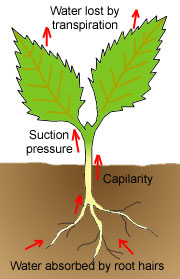 Time in
Time in: 9am
Time out: 12:15pm
Today was the first official class for Botany 1 at the Huntington. We went over a brief analysis of the terms, general functions and types of diversity that consist in plant cells, plant tissues and plant organs. Here are just a few highlights:
 Plant cells
Plant cells:
The
primary cell wall, which is the outside structure of the cell, holds all the needed living organisms of the cell inside. It is used for protection and is made of cellulose.
The
vacuole (the clear, bubble-shaped looking structures within the plastic cell model) are frequently filled with water and keeps the cell plump, also known as turgor pressure.
The
nucleus (the yellow oval inside the cell model) is the DNA of the plant cell.
 Plant tissues:Apical (or primary) meristems
Plant tissues:Apical (or primary) meristems leads to elongation of the plant. This is also where new cells form and are rapidly dividing.
Lateral (or secondary) meristems creates the width of the plant. This can lead to thickening in stems and roots. It helps to create wood.
 Plant organs:
Plant organs:The three main organs of the plant are its roots, stems and leaves.
The
root hairs grow out of the epidermis and is responsible for taking in water. Root hairs develop within a day of germination.
The
root cap simply protects the very tip of the roots.
Roots absorb water and dissolved minerals, store food and water, and anchor the plant.
Next week, we will continue our talk about plant organs, discuss the functions and diversity of stems and leaves, and move on to plant processes.



















































